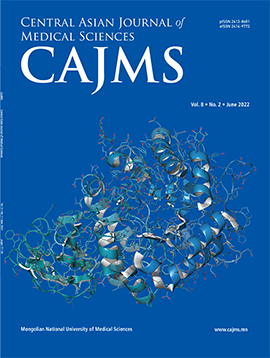Health-Seeking Behavior among Tuberculosis Suspected Cases in Major Cities of Mongolia
DOI:
https://doi.org/10.24079/cajms.2019.09.004Keywords:
Health Care Utilization, Tuberculosis, Mongolia, BehaviorAbstract
Objective: To assess the health-seeking behavior among presumptive TB cases in a Mongolian population-based TB prevalence survey. Tuberculosis (TB) is a major public health concern in Mongolia. TB prevalence survey provides a chance to explore health seeking behavior at the population level. Methods: A population based, cross-sectional survey was conducted using 51 cluster samplings in Mongolia. Participants were interviewed for TB symptoms and their health seeking behavior aged 15 years and above. Participants with a cough lasting two weeks were classified as TB suspects. Results: Of 27,112 survey participants, 4.6% had cough more than two weeks. Forty-eight percent of them had sought health care and to reported pharmacies (26.2%), family group practitioners (45.7%), district health centers (13.3%), and private physicians (3.6%) as first point of contact. The young adults (46.8%) and students (61.0%) approached pharmacies for care more often than their counterparts. Preference for family clinics increased with age. Conclusions: In this survey, 48.1% of the TB suspects had visited a health-care provider. TB case detection need to be improved by retraining health staffs of family health facilities.
Downloads
254
Downloads
Published
How to Cite
Issue
Section
License
Copyright (c) 2019 Mongolian National University of Medical Sciences

This work is licensed under a Creative Commons Attribution-NonCommercial 4.0 International License.




